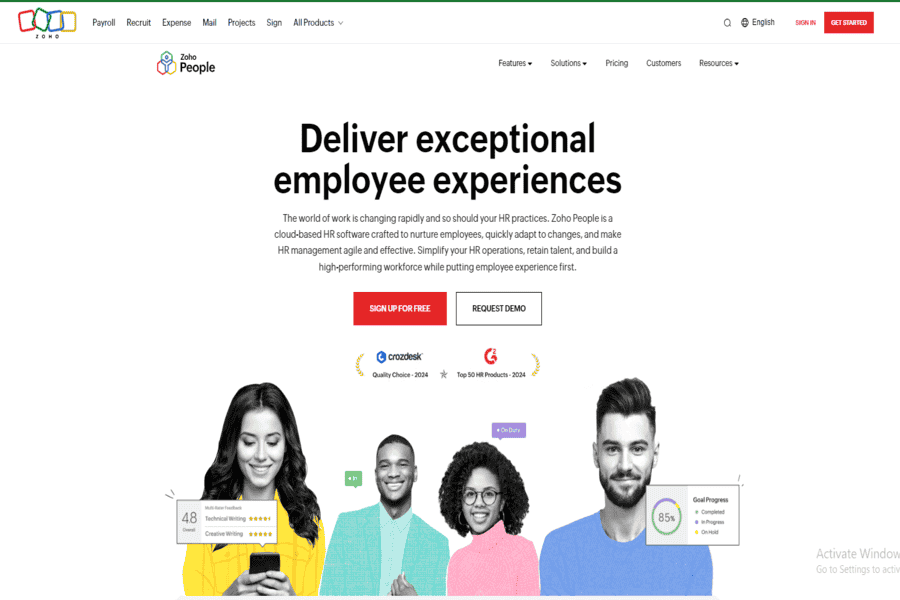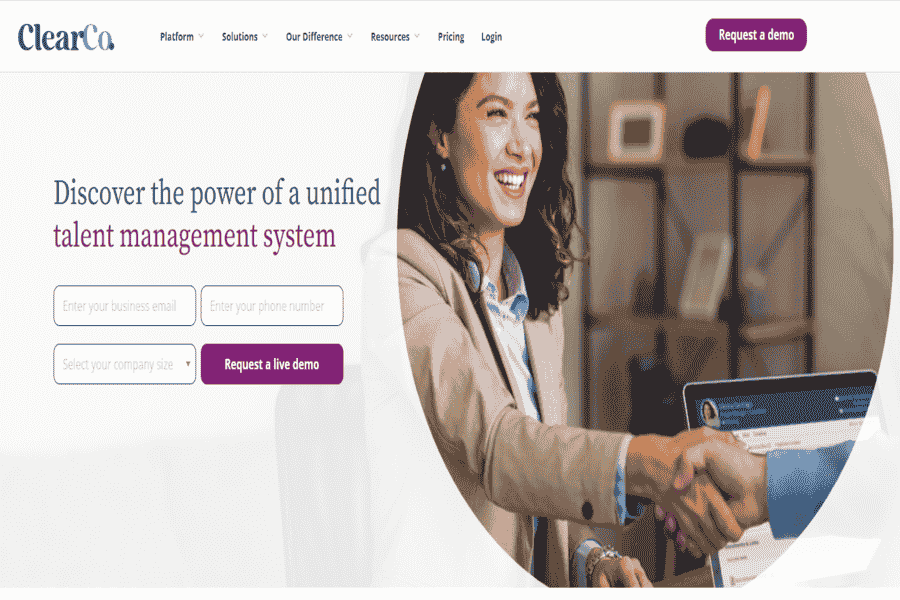Top AI-Powered Onboarding Tools in 2025
February 28, 2025


Onboarding is critical for any organization, setting the tone for new employees’ experience and subsequent performance. However, manual onboarding processes can be time-consuming, error-prone, and often lead to a less-than-ideal employee experience. To address these challenges, many organizations are turning to AI-powered onboarding tools. These tools can automate tasks like paperwork, schedule meetings, and provide personalized learning resources, enhancing the overall onboarding experience. By effectively utilizing recruitment software in conjunction with AI-powered onboarding tools, organizations can streamline the entire hiring process, from initial candidate screening to employee onboarding, ensuring a smooth and efficient transition for new hires.
Onboarding is more than just paperwork and orientation. It’s a strategic process designed to welcome and integrate new hires into an organization seamlessly. This comprehensive approach ensures new employees feel valued, informed, and engaged from day one.
This phase involves administrative tasks like background checks, paperwork, and IT setup.
This is where new hires are introduced to the company culture, values, and mission.
This involves training new hires on the specific skills and knowledge required for their role.
This phase focuses on helping new hires build relationships with their colleagues.
Automating onboarding processes can significantly streamline the new hire experience, boost efficiency, and improve organizational outcomes. Here’s a deeper dive into the key benefits:
Automated systems can guide new hires through the process, providing timely information and reducing confusion.
Tailored onboarding experiences can be created based on individual roles and needs.
Automated systems can expedite the process, allowing new hires to start contributing sooner.
Automating repetitive tasks like paperwork and data entry frees HR professionals to focus on strategic initiatives.
Automated workflows can accelerate the onboarding process, reducing time-to-hire.
Automation minimizes human error, ensuring accurate and consistent data entry.
Automated systems can eliminate manual data entry errors, improving data quality.
Automated checklists and reminders ensure compliance with legal and regulatory requirements.
Consistent application of processes reduces variability and ensures a smooth onboarding experience for all new hires.
Automated systems can monitor progress and identify potential compliance gaps.
Timely reminders for required paperwork and certifications can prevent delays and penalties.
Automated systems can create a detailed audit trail, facilitating compliance audits and investigations.
Automated systems can track key metrics, such as time-to-hire and completion rates, to identify areas for improvement.
AI-powered tools can analyze data to predict future trends and optimize onboarding strategies.
Data-driven insights can help organizations make informed decisions about their onboarding processes.
AI-powered onboarding tools are revolutionizing the way organizations welcome and integrate new hires. Here are some of the key features that make them indispensable:
Automatically route and track essential documents like offer letters, contracts, and forms.
Facilitate electronic signatures to speed up the process.
Send timely reminders to ensure timely completion of paperwork.
Deliver role-specific training materials and resources.
Adjust the pace and content of onboarding based on the learner’s progress and preferences.
Match new hires with experienced mentors who can provide personalized guidance and support.
Assign tasks to the appropriate individuals based on their roles and responsibilities.
Set automated reminders and deadlines to ensure timely completion of tasks.
Track progress and identify potential bottlenecks.
Send automated welcome messages and updates to new hires.
Provide instant answers to common questions and troubleshoot issues.
Facilitate virtual team meetings and collaborative projects.
Track key metrics like time-to-hire and completion rates.
Identify potential issues and take proactive measures to improve the onboarding process.
Use data to make informed decisions about future onboarding strategies.

apling is an AI-powered onboarding platform that streamlines employee onboarding by automating workflows, sending reminders, and integrating with existing HR tools.
Custom pricing based on team size and features.

BambooHR is an HR software platform with onboarding automation tools like electronic signatures, checklists, and automated workflows.
Starts at $5.25 per employee per month; custom plans available.

WorkBright automates onboarding paperwork, enabling employees to complete forms digitally before their first day.
Starting at $158 monthly, tiered pricing is available for larger organizations.

Lessonly is an AI-driven training and onboarding tool that helps create and automate learning modules for new hires.
Custom pricing based on features and team size.

Talmundo is a user-friendly onboarding tool that automates onboarding workflows and engages employees through interactive guides and training.
Custom pricing based on organization size and requirements.

Zoho People is an HR management platform with robust onboarding automation tools, including preboarding workflows, electronic signatures, and personalized task lists.
Plans start at $1.25 per employee per month; premium plans are available.

Onboard by HR Cloud offers a paperless and automated onboarding platform, including customizable workflows, document management, and employee engagement tools.
Custom pricing is available upon request.

Click Boarding specializes in onboarding automation, offering tailored workflows, compliance management, and engagement tools for new hires.
Custom pricing based on organizational needs.

iCIMS Onboard is a powerful onboarding solution that integrates with the broader iCIMS Talent Cloud, enabling seamless transitions from hiring to onboarding.
Custom pricing based on organization size and features.

Gusto provides a comprehensive payroll, benefits, and onboarding automation platform, focusing on small to medium-sized businesses.
Starts at $40 per month plus $6 per employee; additional plans available.

Freshteam is a versatile HR software with onboarding automation tools such as digital forms, onboarding checklists, and employee management features.
It starts at $1 per monthly employee; additional plans are available.

Humi is an all-in-one HR platform for small to medium-sized businesses, offering automated onboarding workflows and employee data management.
Custom pricing based on features and organization size.

ClearCompany offers a talent management suite with robust onboarding features like personalized workflows, compliance tracking, and employee engagement tools.
Custom pricing based on organization size and features.

Paycor offers a cloud-based HR solution with onboarding automation, compliance tools, and document management for new hires.
Custom pricing is available upon request.

BizMerlinHR is a comprehensive HR management platform offering onboarding automation, employee records management, and AI-driven insights.
It starts at $5 per monthly employee; custom plans are available.

Rippling is a comprehensive HR software that automates onboarding by integrating IT, payroll, and compliance systems to streamline the process.
It starts at $8 per monthly employee; custom packages are available.

Namely, it is an HR management platform with automated onboarding features, document management, and task-tracking tools for new hires.
Custom pricing is available based on features and team size.

Personio is an all-in-one HR platform for small and mid-sized businesses, offering onboarding automation, task management, and employee records tracking.
It starts at €99 per month; tiered pricing is based on features.

Trello is a versatile project management tool that can be customized for onboarding processes with templates, task boards, and automation features.
Free for basic; premium plans start at $5 per monthly user.

Kissflow HR Cloud is a modular HR solution that includes onboarding automation, employee lifecycle management, and workflow customization.
Starts at $9.90 per user per month; custom pricing is available.
When selecting an AI onboarding tool, consider the following factors:
Ensure the tool can accommodate your organization’s growth and changing needs.
The tool should integrate seamlessly with your existing HR systems and tools.
The tool should be easy for HR professionals and new hires.
The tool should comply with relevant data privacy and security regulations.
Evaluate the total cost of ownership, including licensing fees, implementation costs, and ongoing maintenance.
Automated workflows streamline tasks like paperwork, background checks, and IT setup.
New hires can quickly access essential information and complete training modules.
AI-powered tools can tailor onboarding experiences to individual preferences and learning styles.
A smooth and efficient onboarding process can create a positive first impression.
Interactive onboarding modules and timely communication keep new hires engaged.
Routine tasks like document routing, reminders, and data entry can be automated.
Efficient workflows reduce manual effort and minimize errors.
HR teams can focus on strategic initiatives and spend less time on administrative tasks.
AI-powered analytics provide real-time insights into onboarding metrics, such as time-to-hire and completion rates.
Identify potential bottlenecks and areas for improvement.
Use data to optimize onboarding processes and improve outcomes.
While AI-powered onboarding tools offer significant advantages, it’s important to acknowledge potential challenges and limitations:
Implementing an AI onboarding tool can involve significant upfront costs, including software licenses, hardware, and professional services.
Organizations must carefully evaluate the potential ROI to justify the investment.
Onboarding processes often involve handling sensitive personal information.
Robust security measures are essential to protect data from unauthorized access and cyberattacks.
Adhering to data privacy regulations like GDPR and CCPA is crucial.
Some employees may resist new technologies, especially if they are accustomed to traditional onboarding methods.
Organizations must provide adequate training and support to help employees adapt to the new tools.
Effective change management strategies are essential to minimize resistance and maximize adoption.
While AI can automate many tasks, it may struggle to replicate the nuances of human interaction, such as empathy and emotional intelligence.
AI algorithms can inadvertently perpetuate biases if not carefully designed and monitored.
The future of onboarding automation is poised for significant innovation. Here are some key trends to watch:
AI algorithms will analyze vast data to tailor onboarding experiences to individual preferences and learning styles.
AI can predict and proactively address potential challenges, ensuring a smoother onboarding process.
NLP will enable more natural and intuitive interactions between new hires and the onboarding system.
VR and AR can create immersive training simulations and virtual office tours.
VR can facilitate remote onboarding, making it easier for geographically dispersed teams to connect and collaborate.
VR and AR can provide interactive and engaging learning experiences.
Integration with HRIS, LMS, and performance management systems can streamline data exchange and reduce manual effort.
A unified HR technology stack can create a cohesive and seamless employee experience.
Integration can provide valuable insights into onboarding effectiveness and employee performance.
Blockchain can ensure the security and integrity of onboarding documents and certifications.
Smart contracts can automate the verification of documents and credentials.
AI-powered onboarding tools are revolutionizing the way organizations welcome and integrate new hires. By automating routine tasks, personalizing the onboarding experience, and providing valuable data-driven insights, these tools can help organizations create a more efficient, engaging, and successful onboarding process.
The ROI of AI-powered onboarding tools can vary depending on the specific features and benefits. However, many organizations have reported significant time, effort, and cost savings. Additionally, these tools can improve employee satisfaction and retention, positively impacting the line.
To ensure a smooth transition, it’s important to involve key stakeholders, such as HR professionals, IT staff, and managers, in the decision-making process. Additionally, employees should be provided adequate training and support to help them adapt to the new technology.
When using AI-powered onboarding tools, it’s important to consider ethical implications, such as data privacy, bias, and transparency. Organizations should ensure that AI algorithms are fair, unbiased, and transparent.
